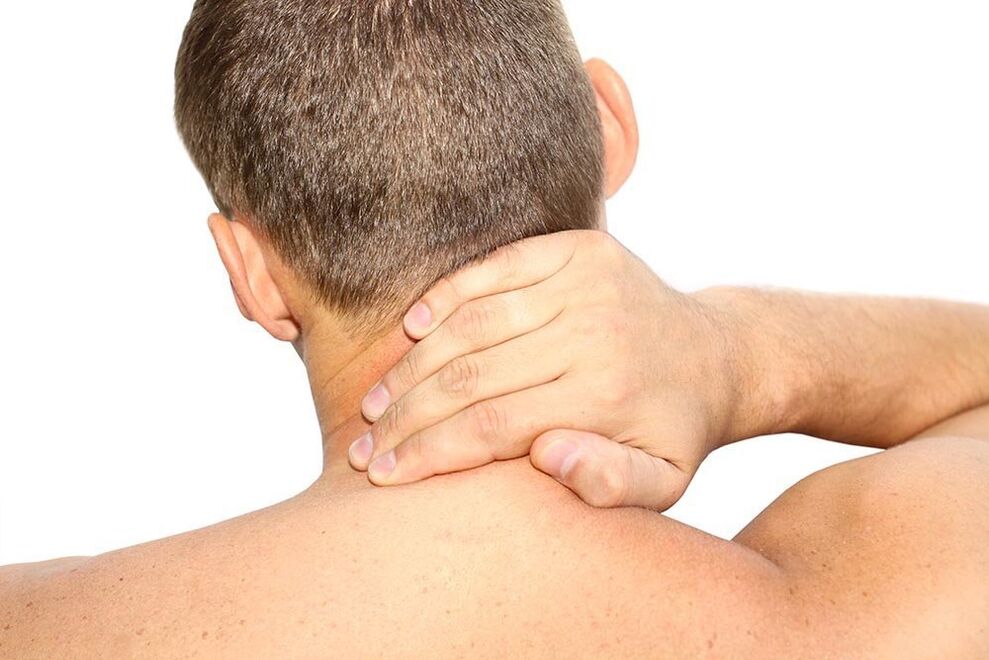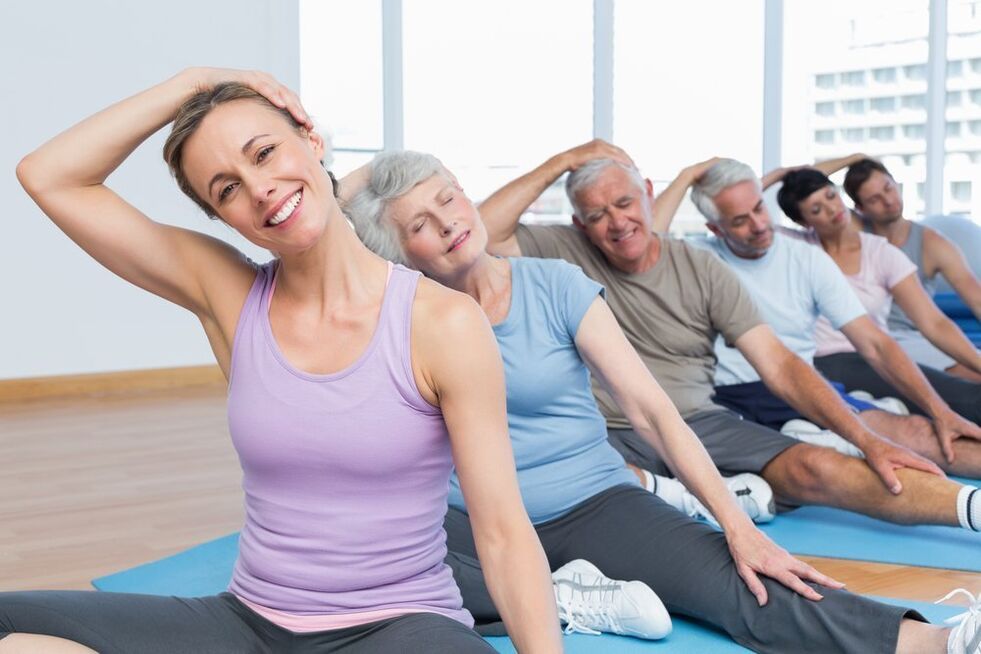In the treatment of cervical osteochondrosis, one cannot do without doing special exercises. Physical activity stops the progression of the disease, relieves pain, accelerates the regrowth of damaged tissue. Without regular therapeutic exercise, it is impossible to restore neck mobility, strengthen the spine and neck muscles.
The role of exercise in the treatment of osteochondrosis

Cervical osteochondrosis is a disease that is accompanied by pain in the neck and other unpleasant symptoms, such as headache, dizziness, tinnitus, numbness in the hands, muscle weakness. The disease easily becomes chronic, worsens over time and can lead to the development of serious complications: protrusion, intervertebral hernia. Therefore, treatment of osteochondrosis should be started as early as possible. It consists of taking medications, undergoing physiotherapy and massage procedures, and doing special exercises.
Prevention and treatment of cervical osteochondrosis is incomplete without therapeutic training. With the help of exercise, you can relax over -stressed neck muscles, reduce pressure on nerve roots and reduce neck pain. Therapeutic gymnastics strengthens muscles, increases the flexibility of the spine, normalizes blood circulation in the affected area, improves tissue nutrition, and accelerates their regrowth. Exercise therapy works best in combination with other therapeutic measures. You cannot be treated with just medications and massages. Physical activity in this case is very necessary. Only they can increase neck mobility and strengthen paravertebral muscles.
Complex training for the treatment and prevention of cervical osteochondrosis

To warm up the spine, increase blood supply to the cervical area and increase the elasticity of the neck muscles, you can use the following exercises:
- Take a comfortable stable posture. Straighten your back. Lower your arms freely at your sides. Slowly turn your head to the right. Try to rotate it as far as possible, up to a 90 -degree angle. If neck mobility is not very good, you need to turn your head as much as possible. Each turn will get better and better. It should be remembered that all exercises for the neck must be done smoothly and carefully, otherwise you can get pinched nerves or dislocate the cervical vertebrae. Make 7-10 turns to the right and to the left.
- Without changing your posture, relax your neck. Tilt your head to your chest, bring your chin to your chest. Lift your head easily, place it straight again. Repeat 7-10 times. Here, as in previous exercises, you need to start with a shallow inclination, if you are not able to immediately reach your chest with your chin.
- Rest your neck and shoulder girdle. Slowly tilt your head back, bring the back of your head to your back. Stretch your chin as far as possible. Repeat several times.
Another set of exercises for the prevention and treatment of cervical osteochondrosis:
- Take a sitting or standing position. Lift your head and straighten your neck. Rest your neck and shoulders. Gently press your hand to your forehead. Press down on the palm of your hand with your head as if you are about to move it. The neck muscles should tighten abruptly and then relax.
- Repeat the previous exercise, but place your palms on the sides of your head. Try pressing your head on your hands with non -sharp movements. Hold the tension for three seconds, then relax. Perform the next repetition. In total, 5 to 10 repetitions should be performed.
- Sit down, straighten your neck and back, relax. Lift your shoulders towards your ears. Hold this position for 3-5 seconds.
- Get up, stand up. Stretch your arms straight to the sides, raise to shoulder level. Rotate your head 10 times in each direction.
- Massage your neck with a rubbing motion up and down and in a circle. Done in 3 minutes.
- While sitting or standing with your back straight, shake your head back and forth as if you were saying yes. The range of motion should be small.
- Slowly shake your head as if you disagree with someone and say no.
Cases when the described set of exercises is used: prevention of osteochondrosis, early stages of the disease, neglected conditions. The first complex is prohibited for use during exacerbation of the disease.
An intricate set of exercises

First complex:
- Lying on the mat. The leading hand, for the right person is right, place on your stomach. Lower your other hand to your chest. Breathe slowly and measured, making the most complete inhalation and exhalation.
- From a lying position, get up, lean on your hands, and stretch your neck. Slowly lower yourself onto the mat. Repeat 7-10 times.
- Lying on your stomach, stretch your arms at your sides. Gently turn your head and touch your ears to the floor. Repeat on the other side.
- Sit down and straighten your neck. Exhale, tilt your head to your chest and press your chin hard. Inhale as you return to the starting position.
- Stand or sit. Do not tighten your neck and shoulder belts. Tilt your head forward and do some gentle circular rotations of your head along the spinal column.
This set of exercises should not be performed during exacerbation of the disease, it is only allowed during remission. The second complex can also be performed during exacerbations:
- Hold your shoulders with your hands and make rotational movements with them - 10 times in each direction.
- Clap your hands into your fists and spread your hands wide. Bend it slightly, as if to show a strong biceps, then straighten it to the side parallel to the floor. Shake the limbs, relax the muscles.
- Perform regular exercises where the head presses on the palms. But complicate it by pressing both palms close together to the forehead.
- Place the linked hands behind the head. Tilt your head back, opposing this movement with your hands.
- Pull your shoulders forward. Straighten again. Take them back.
- Lying on the mat. Lift your neck as high as possible and hold in that position for five seconds.
- Stretch your arms over your head and place them on the side of your head on the opposite side. Slowly tilt your head with your hands.
Both simple and complex sets of exercises should be done 3-4 times a day. Each exercise is repeated 7 to 20 times.

















































